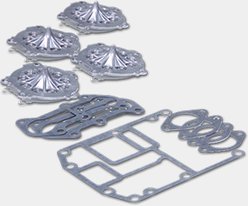There’s something about catching a musky that’s different from other fish.
As the biggest fish in most of the lakes where they’re found, muskies are also the kings of those waters. And being the kings, they’re hard to topple (or catch, in this case). Hence the nickname, “fish of 10,000 casts.”
Yet, it can be done, and Mercury Pro Team member Jim Saric, host of “The Musky Hunter” TV show, has six tips to help you catch your first – or catch more – of these legendary fish.
1. Follow the Food
Muskies are apex predators, which means they get to pick the best feeding places in any body of water. Those tend to be large food shelves or flats, where schools of baitfish are found.
“Food shelves are like fast food restaurants for muskies,” Saric said. “There will almost always be muskies somewhere around them.”
2. Stay on the Edge
According to Saric, muskies are “creatures of the edge.” They like to cruise edges as they hunt their prey. So, when fishing cover like a weed flat or reeds, don’t get up into the thickest areas. Instead, target the edges where the muskies are more likely to be cruising or watching for baitfish in the open space.
3. Timing Can Be Everything
While the odds of catching a true trophy musky tend to increase in the fall, if you’re trying to catch your first musky or multiple, Saric recommends fishing hard all summer.
“Day in and day out, give me summertime,” he said. “The weather is usually warm and stable. That means much longer feeding windows and much better chances at catching muskies.”
Just note that muskies can be rather fragile, and fishing for them once the water temperatures get above 80 degrees can put them at risk. If you catch a fish, keep it in a landing net in the water until you can snap a quick photo, then release it.
4. Watch the Weather
There may be no fish more fickle to weather than a musky. Even something as seemingly minor as a subtle change in temperature or wind direction can trigger or shut down the fish in an instant. They also tend to like nastier weather. Meaning, as comfortable as it is to fish on flat, sunny days, those are generally the worst days to fish for muskies. Meanwhile, those gloomy, rainy, windy days are when they decide to really feed.
5. Fish Fast
Muskies are big, strong and fast, and they show off those traits when chasing down their prey. You can help trigger that aggressiveness by fishing fast – or at least always moving the lure.
6. Fish and Repeat
When hitting a spot, fish it quickly for 20 to 30 minutes and leave if nothing shows itself. Then come back later to try again, as sometimes a fish is just waiting for the right time.
Saric wants all musky anglers to remember that it’s often called musky “hunting” for a reason. You’re looking for little signs to point you in the right direction just like a hunter would, and there’s no bigger sign than seeing a fish. Muskies love to follow lures without eating, and when you see one, don’t give up on that fish.
“Once you get a fish to follow your lure, you now know where he lives,” Saric said. “Return again and again at different times of day and with different lures. That fish may not bite in the morning, but maybe it will in the afternoon or in the evening. Regardless, if you keep on that fish, eventually you’ll get him.”
For more musky fishing advice from Jim Saric, check out muskyhuntertv.com




















